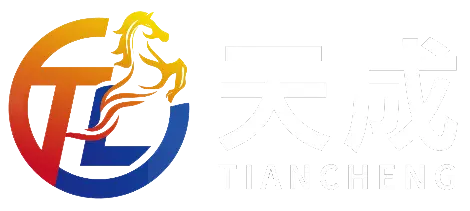As the oil and gas industries continue to evolve, optimizing pipeline efficiency remains a critical focus for operators aiming to reduce costs and enhance production capabilities. A recent report by the International Association of Drilling Contractors highlights that approximately 30% of drilling costs can be attributed to inefficiencies in the riser systems used during offshore operations. This statistic underscores the importance of exploring innovative riser hanger alternatives that can significantly improve the functionality and reliability of these systems. Riser hangers play a pivotal role in providing structural support and minimizing the risk of pipeline failures, thus directly impacting overall operational performance. By investing in advanced riser hanger designs and materials, companies are not only enhancing pipeline efficiency but also aligning with sustainability goals. As we delve into this topic, it's essential to examine the emerging technologies and methodologies that promise to redefine the future of riser hanger applications in the industry.

Riser hangers play a crucial role in the efficiency and reliability of pipeline systems, particularly in offshore and subsea environments. These structural elements support the risers, ensuring they remain stable and secure amidst the dynamic conditions of fluctuating liquid and gas flows. The intermittent nature of these flows can lead to significant pressure variations, which may ultimately compromise the integrity of topside processing facilities. Special attention is therefore needed to enhance the design and functionality of riser hangers to mitigate potential failures and damage in pipeline systems.

Recent research highlights the impact of riser design on the gas-liquid flow dynamics within offshore pipeline configurations. By employing advanced methods such as ultrasonic sensor technology and machine learning, engineers can better identify flow regimes and their effects on performance. Experimental studies have shown that riser geometric configurations can influence the behavior of fluid interfaces, which in turn affects the overall efficiency of the pipeline system. As the industry seeks to adopt innovative riser hanger alternatives, understanding these complex interactions will be essential for improving pipeline operation and safety in the face of ongoing challenges.
The traditional riser hanger designs have long been the backbone of subsea pipe management, aiding in the support and stabilization of pipelines. However, current challenges present a significant hurdle for optimal pipeline efficiency. One major concern is the susceptibility to environmental forces such as waves and currents, which can induce fatigue and stress on the hangers. This results in costly maintenance and potential failure, jeopardizing the entire pipeline system.
Additionally, traditional materials used in riser hangers often fall short in terms of durability and corrosion resistance. Given that these components are exposed to harsh marine conditions, the risk of degradation increases over time, necessitating frequent inspections and replacements. Such challenges not only inflate operational costs but also extend project timelines, prompting engineers to seek innovative alternatives that can enhance overall pipeline performance. Addressing these challenges is essential for advancing the industry toward more reliable and cost-effective solutions.
This chart displays the comparative pipeline efficiency of traditional riser hanger designs against three innovative alternatives. The data illustrates a clear trend towards enhanced efficiency with newer designs, highlighting the potential for improvements in pipeline operations.
In the pursuit of enhanced pipeline efficiency, the development of innovative materials and technologies in riser hanger production has emerged as a focal point for engineers and manufacturers. Traditional riser hangers often face challenges related to weight, corrosion, and adaptability to various environmental conditions. By integrating advanced composites and metallic alloys, manufacturers can create lighter, more durable riser hangers that withstand the rigors of deepwater installations and harsh offshore environments.
Moreover, cutting-edge technologies such as 3D printing and digital modeling have streamlined the design and production processes of riser hangers. These innovations allow for rapid prototyping and customization, enabling engineers to tailor solutions to specific project requirements. The result is a more efficient and cost-effective approach to pipeline management that can significantly reduce the time and resources involved in installation and maintenance. As the industry continues to evolve, the synergy between innovative materials and modern production techniques will undoubtedly shape the future of pipeline infrastructure.
In the realm of pipeline systems, the choice of riser hangers plays a crucial role in enhancing operational efficiency and safety. This blog delves into a comparative analysis of innovative alternatives to traditional riser hangers, highlighting their potential benefits. Traditional riser hangers often present challenges such as maintenance issues and environmental susceptibility. In contrast, newer materials and designs offer durability and resistance to harsh conditions, paving the way for improved overall performance.

Emerging alternatives, such as modular riser hanger systems, allow for greater flexibility and adaptability in configuration, catering to various pipeline requirements. Unlike conventional designs, these modular systems can be easily customized and adjusted, minimizing installation time and costs. Additionally, advancements in composite materials have led to lighter yet stronger riser hanger solutions, reducing the weight burden on subsea structures while maintaining integrity under pressure. By evaluating these innovative options, operators can make informed decisions to enhance pipeline efficiency and ensure long-term sustainability in their projects.
As industries seek to enhance pipeline efficiency, upgrading riser hanger systems becomes essential. The implementation of innovative riser hanger alternatives can significantly reduce drag and increase the longevity of pipelines. Key strategies for upgrading involve thorough assessment of current systems and identifying areas where existing hangers may be compromising performance. Utilizing advanced materials, such as composites or polymers, can provide greater flexibility and strength, supporting elevated performance in challenging environments.
Moreover, integrating smart technology into riser hanger systems offers an avenue for real-time monitoring and maintenance, reducing downtime and enhancing operational efficiency. By applying data analytics and IoT solutions, operators can anticipate issues before they escalate, ensuring that maintenance can be performed proactively rather than reactively.
Collaborative efforts between engineering teams and technology providers are crucial to designing these upgraded systems, ensuring they meet industry standards while exceeding performance expectations. Emphasizing innovation within riser hanger design not only boosts pipeline integrity but also leads to sustainable operational practices in the energy sector.
